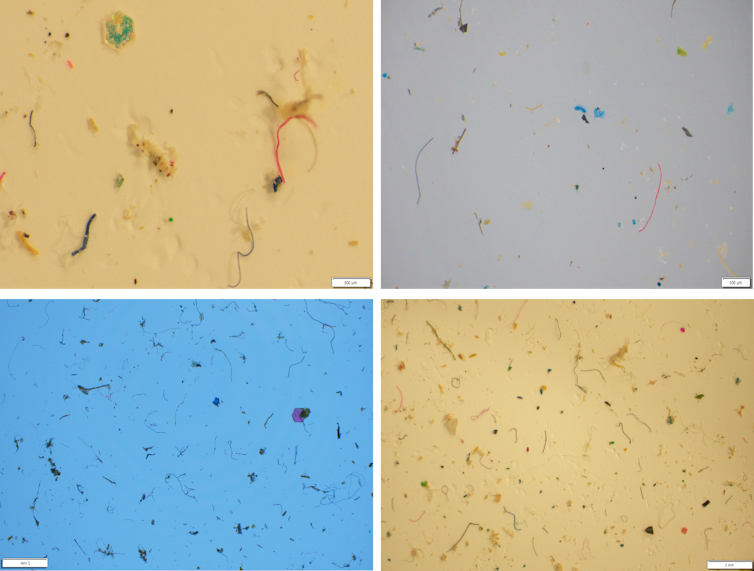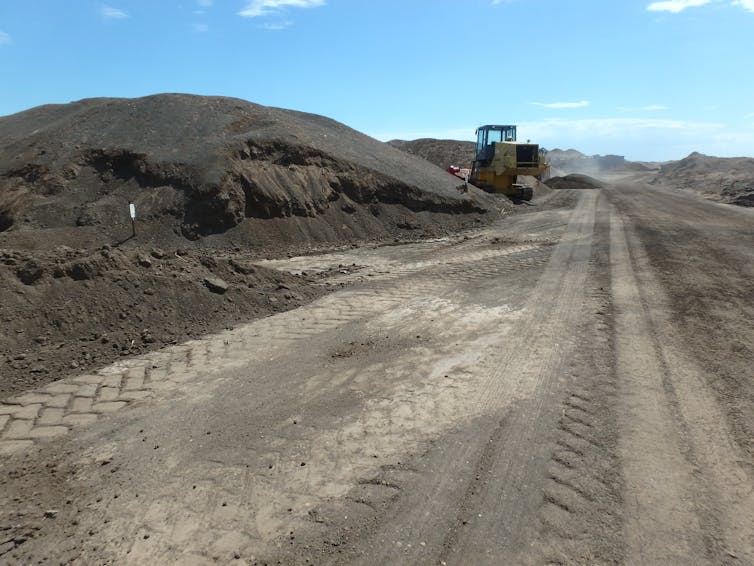Source: The Conversation (Au and NZ) – By Shima Ziajahromi, Advance Queensland Research Fellow, Griffith University

Australian wastewater treatment plants produce thousands of tonnes of treated sewage sludge every year. This nutrient-rich material is then dried to make “biosolids”, which are used to fertilise agricultural soil.
Unfortunately every kilogram of biosolids also contains thousands of tiny pieces of plastic. These pieces are so small they can only be seen under a microscope, so they’re called microplastics.
In our new research, we sampled biosolids from three states and calculated the average contribution of microplastics per person: 3g in New South Wales and 4.5g in Queensland. But the average in South Australia was 11.5g – that’s about the same amount of plastic as a plastic bag.
Roughly 80% of this microplastic comes from washing clothes. We need to protect agricultural soil from contamination by making simple changes at home, mandating filters on washing machines and introducing more effective wastewater treatment.
Read more:
Microplastics are common in homes across 29 countries. New research shows who’s most at risk
Biosolids as fertiliser
Most domestic wastewater comes from household kitchens, bathrooms and laundries.
Wastewater treatment separates most of the water and leaves sewage sludge behind. This mixture of water and organic material can then be sent to landfill for disposal or dried to form a material called “biosolids”.
In Australia, two-thirds of the 340,000 tonnes produced annually are used on farms to improve soil quality and stimulate plant growth. This not only boosts agricultural productivity but also allows for more sustainable disposal of treated sewage sludge. The waste becomes a resource, a useful and economically viable fertiliser, rather than ending up in landfill.
Microplastics in Australian biosolids
Wastewater treatment plants can capture anywhere from 60% to more than 90% of the microplastics in sewage before the wastewater is discharged. But plastic is durable and does not degrade during treatment. So the microplastic particles removed from the wastewater are simply transferred to the sludge.
We assessed the abundance, characteristics and size ranges of microplastics in biosolids collected from 13 wastewater treatment plants across three states.
We found every kilogram of biosolid contains between 11,000 and 150,000 microplastic particles.
Most of the microplastics found were invisible to the naked eye, ranging from 20 to 200 micrometres in size.

Shima Ziajahromi
The most common type of microplastic was microfibres from fabric. We found more microplastic fibres during cold seasons. We suspect this corresponds to people washing more synthetic fleece clothing and blankets.
Microbeads are tiny balls of microplastic sometimes added to personal care products and detergents. We did not find any microbeads in samples from South Australia and New South Wales. These states were among the first to support a voluntary industry phase-out of plastic microbeads.
In contrast, we found a small amount of microbeads in samples from Queensland, which only banned microbeads in September last year. That was more than a year after samples were collected for this study.
We estimate Australians release between 0.7g and 21g of microplastics per person into wastewater every year. This wide range is based on our results, which varied from state to state: 0.7g to 5.9g in NSW, 1g to 7.2g in Queensland and 1.9g to 21g in SA. We don’t know why it varies so much between states.
This contributes to the amount of microplastics in biosolids. Our biosolid samples contained anywhere from 1kg to 17kg of microplastics per tonne. Remember this is being transported into our farmlands.
What’s the problem?
Microplastics are steadily accumulating in agricultural soils, where they will remain for hundreds of years. While natural weathering processes such as sunshine and rain will slowly break down microplastics into smaller and smaller particles, that only makes matters worse. Smaller particles cause more harmful effects to soil organisms.
Eating small pieces of plastic can cause internal abrasions and blockages in the digestive tract. In very small aquatic animals such as zooplankton, microplastics can reduce absorption of nutrients from food, decrease reproduction rates, and cause death.
These tiny particles also contain a cocktail of toxic chemicals, either added during manufacturing to improve the product or soaked up from the environment. This makes them even more dangerous.
Smaller microplastics (less than 100 micrometres in size) are even more harmful for soil organisms.
Microplastics in soil can be ingested by soil organisms such as earthworms and cause harmful effects on these vital organisms. Microplastic exposure has also been shown to adversely affect soil health and plant growth.
Australian regulations govern the amounts of heavy metals, nutrients, pathogens and some emerging contaminants allowed in biosolids, but there is no guideline for microplastics concentrations. We think that has to change.

SA Water
Here’s what we can do
Our research shows biosolids are a significant source of microplastics in agricultural systems. More research is needed to better understand the risks.
We need to put effective control measures in place to minimise the accumulation of microplastic in productive agricultural soils.
The most effective way to do this is to reduce the level of microplastics in biosolids at the source.
We know most microplastics in biosolids come from washing clothes. While it may not be possible to eliminate the use of synthetic fabrics, there are some measures we can all take to reduce the amount of microplastic washing off our clothes into the wastewater stream. Properly installed filters in washing machines have been shown to significantly reduce microplastic levels in wastewater.
Australia’s National Plastics Plan recommends the Australian government work with industry to “phase-in” microfibre filters on all washing machines by 2030. But why wait until 2030?
Several jurisdictions, including France, Ontario and California, have already made microfibre filters on washing machines mandatory. It’s time Australia did the same.
In the meantime, there are simple things everyone can do at home. Wash clothes in cold water, avoid running the machine for light loads if you can wait to do a full load, and wash synthetic fabrics less frequently. These steps will also save energy and money.
It’s far better to stop microplastics entering the wastewater stream than trying to remove them at the wastewater treatment plant. Prevention is always better than a cure.
![]()
Shima Ziajahromi receives funding from the Queensland Government through Advance Queensland Industry Research Project. This project was co-sponsored by Urban Utilities, Sydney Water, SA Water, Water Corporation (WA) and Eurofins Environment Testing Australia.
Frederic Leusch receives funding related to this research topic from the Queensland Government through an Advance Queensland Industry Research Project, Water Research Australia, and various Australian water utilities. This project was co-sponsored by Urban Utilities, Sydney Water, SA Water, Water Corporation (WA) and Eurofins Environment Testing Australia.
– ref. Australians are washing microplastics down the drain and it’s ending up on our farms – https://theconversation.com/australians-are-washing-microplastics-down-the-drain-and-its-ending-up-on-our-farms-223079






